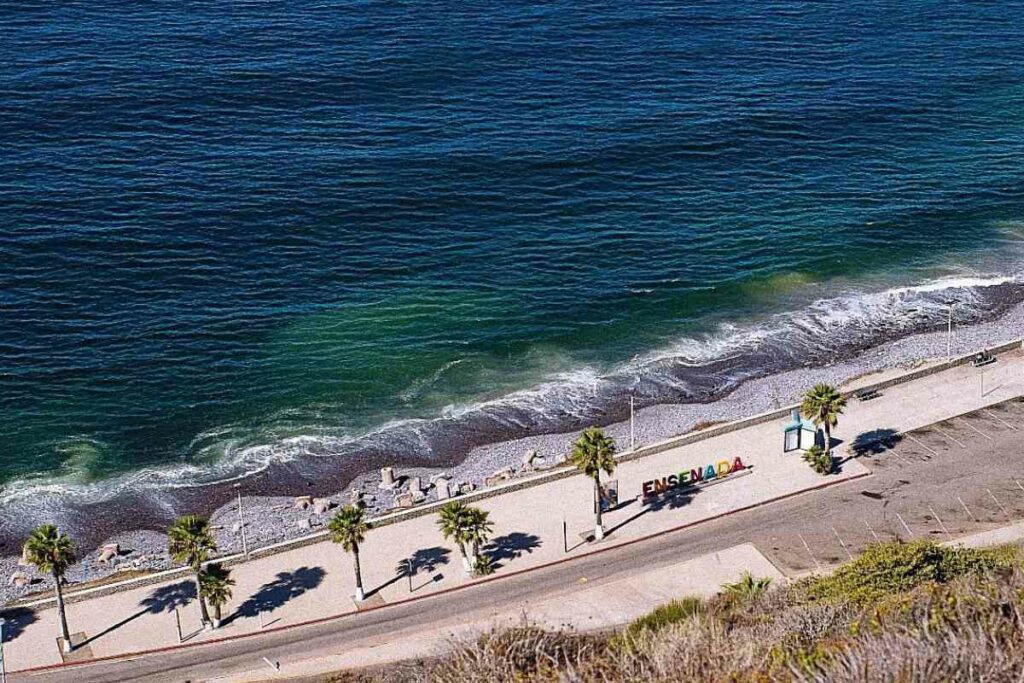Beaches are an essential part of the American landscape, providing recreational opportunities and contributing to the economy through tourism.
Ensuring the safety and cleanliness of these coastal areas is of paramount importance, and several organizations and government bodies play a vital role in their maintenance and protection.
In the United States, beach monitoring and regulation are primarily overseen by the Environmental Protection Agency (EPA) through various laws and programs.
The EPA implements several laws that regulate sources of water pollution to coastal beaches and ocean waters, with the Clean Water Act being the cornerstone of these efforts.

This legislation establishes the basic structure for regulating discharges of pollutants into the waters of the United States and sets quality standards for surface waters, ultimately safeguarding the nation’s beaches and coastal ecosystems.
Additionally, the EPA’s BEACON (Beach Advisory and Closing Online Notification) database serves as a national resource for beach monitoring and notification data reported by states, territories, and tribes.
Collaboration between federal, state, and local authorities is crucial in achieving these goals, and beach managers are provided with resources and support to strengthen monitoring efforts, improve swimmer safety, and detect and prevent marine debris.
By understanding the roles and responsibilities of these various entities, beachgoers can enjoy these valuable natural resources with peace of mind, knowing that their favorite coastal destinations are closely monitored and regulated for their protection.
Overview of Beach Regulation in the USA
Beach regulation in the United States involves monitoring and oversight by a combination of federal, state, and local governments.
The primary federal agency responsible for regulating beaches is the Environmental Protection Agency (EPA). The EPA works in conjunction with state and local governments to maintain water quality standards, protect public health, and ensure that recreational beach activities are safe.
In 2000, the Beaches Environmental Assessment and Coastal Health (BEACH) Act was enacted to amend the Clean Water Act.
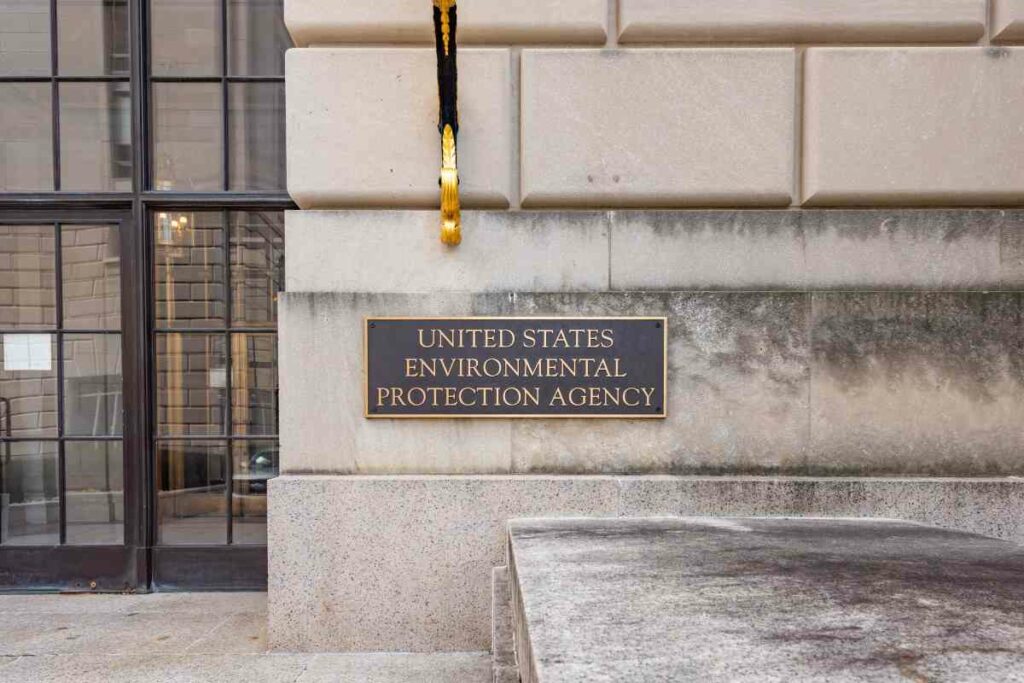
The BEACH Act aims to reduce risks of waterborne diseases associated with coastal recreational waters, including the Great Lakes and marine coastal waters designated for swimming, bathing, surfing, or other water contact activities.
Under the BEACH Act, states are required to adopt water quality standards to protect the public and report beach monitoring and notification data.
Funding from the EPA helps states carry out various activities related to beach regulation, which include:
- Collecting and analyzing water samples to ensure compliance with established water quality standards.
- Notifying the public if water quality standards are exceeded or if there are potential health risks associated with water contact activities.
- Maintaining state databases of beach water quality and advisory information.
The EPA also provides a wide range of technical resources to support state and local governments in their efforts to protect public health and maintain a clean environment at the beaches.
Local governments play a crucial role in beach regulation by enforcing water quality standards, issuing advisories, and closing beaches when necessary.
Typically, local health departments or environmental agencies would monitor beach water quality and work closely with state and federal partners to ensure that recreational beach users are protected from potential health risks.
In conclusion, beach regulation in the United States is a collaborative effort involving the EPA, state and local governments, and the public.
This multi-tiered approach ensures that the nation’s coastal recreation waters remain clean, safe, and enjoyable for everyone.
Take a look
The Beach Act
The Beach Act is an important piece of legislation in the United States that focuses on protecting the health of beachgoers and maintaining water quality in the nation’s coastal recreation waters.
First signed into law in October 2000, the Beaches Environmental Assessment and Coastal Health (BEACH) Act amended the Clean Water Act (CWA).
The act’s main objective is to reduce the risk of disease for those using the nation’s coastal recreation waters by addressing water quality issues.

To achieve this, the BEACH Act enforces three key aspects: testing, monitoring, and notifying the public about possible coastal recreation water problems.
In order to ensure the effective implementation of these aspects, the BEACH Act authorized the Environmental Protection Agency (EPA) to award grants to states, tribes, and territories.
These grant funds are used to operate beach monitoring and notification programs, providing essential support in protecting the public when they visit the beach.
When it comes to the actual monitoring and regulation of beaches in the USA, the EPA plays a significant role.
They administer various laws that protect beaches and oceans, including the Clean Water Act which sets the basic framework for regulating discharges of pollutants into US waters and quality standards for surface waters.
To sum up, the Beach Act plays a crucial role in providing a safe and clean environment for swimming and other recreational activities at beaches in the USA.
With the backing of the EPA and a network of state, tribe, and territorial partners, the act helps maintain water quality standards and ensures the public is informed about health risks associated with coastal waters.
Roles and Responsibilities of Different Entities
In the United States, multiple entities work together to monitor and regulate beaches, ensure public health, and take proper measures to protect the coastal environment.
These entities can be best understood through their different levels of authority: Federal Agencies, State and Local Governments, Tribes and Territories.
Federal Agencies
The Environmental Protection Agency (EPA) plays a significant role in protecting beaches by monitoring beach waters, establishing laws to protect beaches and oceans, and enforcing these regulations.
Additionally, the EPA collaborates with other federal agencies, such as the National Oceanic and Atmospheric Administration (NOAA) and the U.S. Army Corps of Engineers, for coastal management initiatives and the implementation of specific environmental policies.
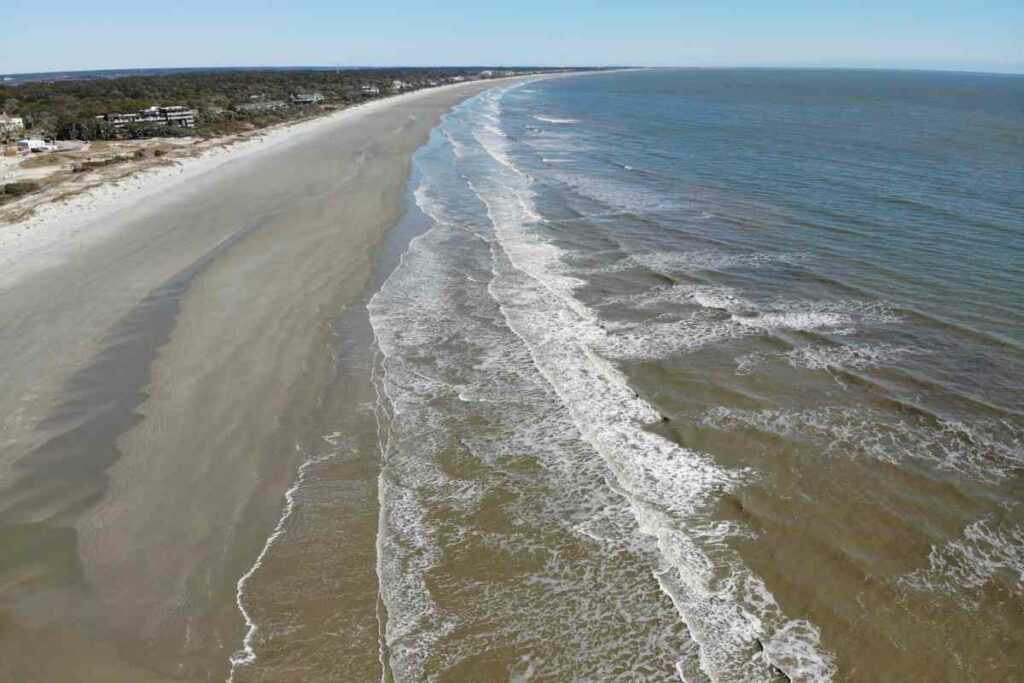
State and Local Governments
Under the state and local public health regulatory authority, State Health Departments and local governments have the responsibility to ensure beach and water safety by conducting regular water quality monitoring, issuing swimming advisories or beach closures when necessary, and enforcing local regulations.
They also work on initiatives such as public education campaigns, beach access management, and coastal habitat preservation.
In regions such as the Great Lakes, state governments collaborate on cross-state agreements to manage and protect the shared beach resources.
This cooperation leads to more effective monitoring and enforcement of beach quality standards and helps address environmental challenges specific to the Great Lakes region.
Tribes and Territories
Tribal governments and U.S. territories also play a role in beach regulation and monitoring. They often work in partnership with the EPA and other federal agencies to establish and enforce environmental policies within their jurisdictions.
These partnerships allow tribes and territories to maintain their unique cultural and environmental values while participating in the broader efforts to protect and monitor beaches in the United States.
Beach Monitoring and Access
Beach monitoring is an essential process to ensure the safety and health of beachgoers in the United States.
Various government agencies at the federal, state, and local levels work together to monitor and regulate beach quality. The primary federal agency responsible for these efforts is the United States Environmental Protection Agency (EPA).
The EPA plays a significant role in beach monitoring by funding activities that help states maintain and develop their beach quality databases.

These activities include collecting and analyzing water samples, notifying the public when water quality standards are exceeded, and maintaining state beach water quality and advisory databases.
One of the EPA’s programs for beach monitoring is the Beach Advisory and Closing Online Notification (BEACON), which houses beach monitoring and notification data from states, territories, and tribes.
Through this database, the public can find information about the water quality of specific U.S. beaches and any ongoing advisories.
The Clean Water Act is a crucial federal law that establishes the regulation of pollutants discharged into the waters of the United States, including surface waters and coastal beaches.
The EPA implements the Clean Water Act, thus helping to protect coastal beaches through the enforcement of water quality standards.
When it comes to public access, it is essential that beachgoers are informed about any beach closures or advisories.
Beaches may be closed due to various reasons such as water pollution, natural disasters, or unsafe environmental conditions. In the event of a closure, the responsible agencies notify the public to ensure their safety.
The EPA works closely with state and local organizations to ensure that beach monitoring and access information is readily available, providing resources for monitoring and regulating beach health.
This collaborative effort is essential to keeping the public informed about the conditions of their local and favorite beaches.
In summary, beach monitoring and public access are essential aspects of maintaining the safety and health of beachgoers in the United States.
The EPA plays a pivotal role in regulating beaches, ensuring water quality, and keeping the public informed about beach conditions and any necessary advisories or closures.
Water Quality Standards and Testing
In the United States, the U.S. Environmental Protection Agency (EPA) is the primary entity responsible for monitoring and regulating water quality at beaches.
A significant piece of legislation that influences this process is the BEACH Act, which defines coastal recreation waters and focuses on activities relating to swimming, bathing, surfing, and other water contact sports.
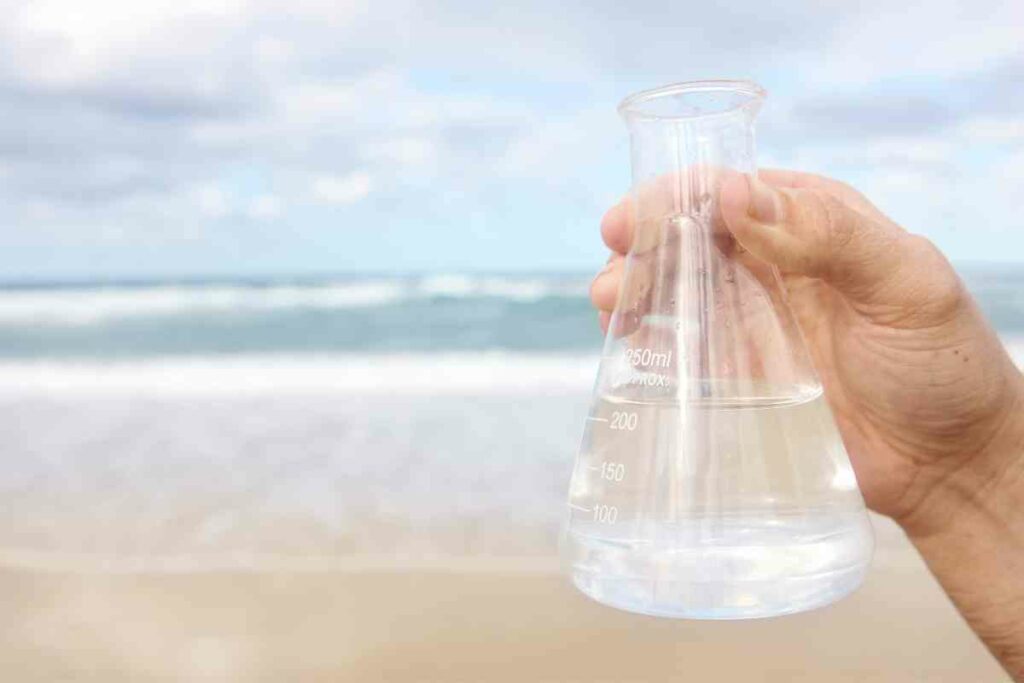
One of the main aspects of EPA’s role is to enforce federal water quality standards. These standards are designed to protect public health and ensure that water quality is suitable for recreational use.
States and tribes are also expected to review, revise, and adopt water quality standards in accordance with EPA’s regulations and the Clean Water Act.
Monitoring beaches for potential hazards is a critical component of maintaining public health and safety.
The EPA provides guidance on beach monitoring techniques, including collecting and analyzing water samples to detect potential pathogens such as bacteria, viruses, or other harmful microorganisms.
If water samples exceed established water quality standards, the responsible authorities are expected to take steps to notify the public about potential risks.
In addition to monitoring for pathogens, the EPA also keeps track of other factors influencing human health at beaches, such as the presence of cyanobacterial blooms or harmful algal blooms.
When necessary, the EPA may provide technical resources and support to help manage and mitigate these threats.
Cleanest Beaches in US
It’s important to note that the beach conditions may change over time, so it’s always a good idea to check with local authorities or environmental organizations for the most up-to-date information.

Here are a few well-regarded beaches known for their cleanliness:
- Siesta Beach, Florida
- Kapalua Bay Beach, Hawaii
- Ocracoke Lifeguarded Beach, North Carolina
- Coast Guard Beach, Massachusetts
- Hapuna Beach State Park, Hawaii
- Grayton Beach State Park, Florida
- Caladesi Island State Park, Florida
- Coronado Beach, California
- Kiawah Beachwalker Park, South Carolina
- St. George Island State Park, Florida
Please note that this is not an exhaustive list and there are many other beautiful and clean beaches across the United States. It’s always a good idea to research and verify the current status of any beach you plan to visit.
Best Wheelchair-Friendly Beaches in USA
It’s important to note that accessibility features may vary, so it’s advisable to contact the beach authorities or local visitor centers to inquire about specific accommodations and services.
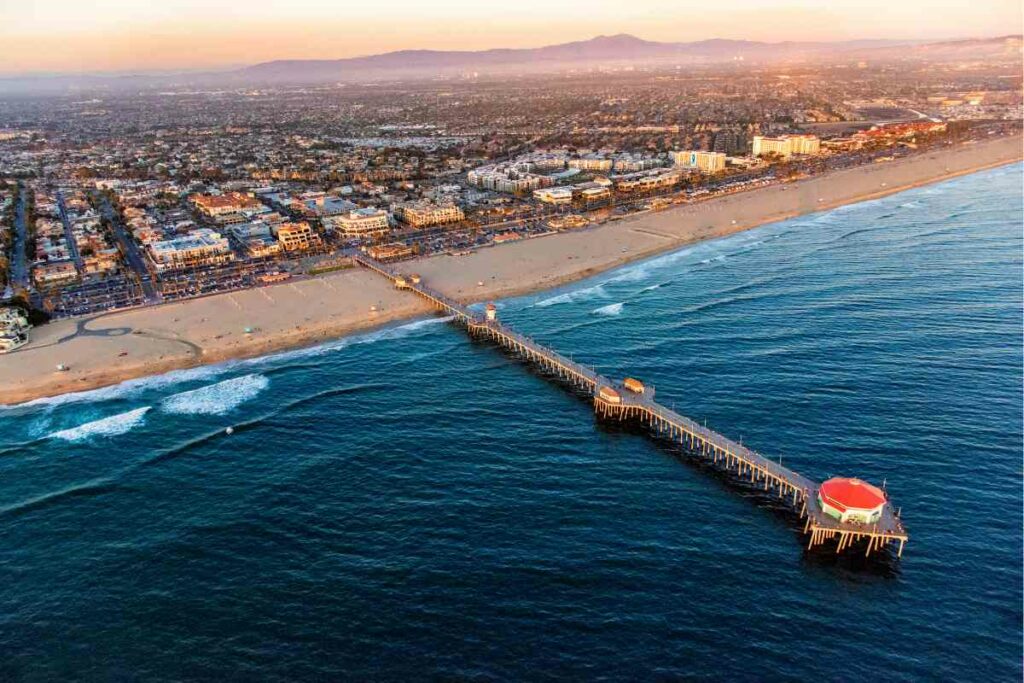
Here are 10 beaches that are generally recognized for their wheelchair accessibility:
- Gulf State Park, Alabama
- Coast Guard Beach, Massachusetts
- Honeymoon Island State Park, Florida
- Huntington Beach, California
- Sandbridge Beach, Virginia
- Assateague Island National Seashore, Maryland and Virginia
- Mayflower Beach, Massachusetts
- Crandon Park Beach, Florida
- Doheny State Beach, California
- Madison Street Beach, Illinois
These beaches have implemented various accessibility features such as boardwalks, wheelchair ramps, beach wheelchairs, accessible restrooms, and designated parking spaces.
Funding and Grants
The United States Environmental Protection Agency (EPA) plays a crucial role in monitoring and regulating beaches across the country.
One key aspect of their work in this domain involves the provision of Beach Grants to eligible states, territories, and tribes.
These grants are awarded under the authority of the BEACH Act, with the purpose of helping these entities develop and implement programs focused on monitoring their beaches and notifying the public when swimming conditions are unsafe.
Another essential contribution to beach monitoring and regulation comes from the National Oceanic and Atmospheric Administration (NOAA).
The NOAA offers various Funding Opportunities for coastal management, including Projects of Special Merit, Coastal and Estuarine Land Conservation Program, and NERR Collaborative Science.
These funding opportunities aim to support initiatives that preserve and maintain the health of coastal and estuarine areas in the United States.

The U.S. Fish and Wildlife Service also provides financial support for coastal habitat restoration through its Coastal Program.
This program focuses on the restoration and protection of fish and wildlife habitats located on public and privately-owned lands. Working in conjunction with local partners, the Coastal Program helps implement strategic habitat conservation and promotes landscape-scale restoration efforts.
In summary, various federal agencies in the United States, including the EPA, NOAA, and the U.S. Fish and Wildlife Service, provide funding and grants to various entities in order to monitor and regulate coastal beaches across the nation.
These grants play a vital role in developing and implementing effective beach monitoring programs designed to ensure the safety and well-being of both the public and the surrounding ecosystems.
Recreational Water and Marine Debris
The United States Environmental Protection Agency (EPA) plays a significant role in beach monitoring and ensuring the safety of swimmers and recreational water users.
They provide resources and information on monitoring methods for pathogens in recreational waters as well as marine debris. This helps beach managers strengthen their efforts in maintaining the safety of beachgoers.
In 2008, the Clean Boating Act was passed as an amendment to the Clean Water Act. This act requires the EPA to identify discharges incidental to the normal operation of recreational vessels and to develop management practices that limit the amount of pollution discharged into the nation’s waters.
Marine debris poses a significant challenge for beaches and coastal areas in the United States. To address this issue, the Marine Debris Act was signed into law in 2006 and has been amended in 2012, 2018, and 2020.

This act authorizes the National Oceanic and Atmospheric Administration (NOAA) Marine Debris Program to work on mitigating and preventing marine debris.
NOAA also conducts marine debris-related research to evaluate the potential economic impacts on tourism-dependent communities.
Two types of impacts are examined: the loss or gain of recreational value to beach visitors and the economic impact resulting from reduced or increased spending on beach visits in coastal areas.
Through the Marine Debris Monitoring and Assessment Project (MDMAP), NOAA focuses on monitoring macro-sized marine debris (roughly the size of a bottle cap or larger) on shorelines.
The MDMAP functions as a network of partnering organizations and volunteers who contribute their data to form a comprehensive understanding of marine debris issues.
Public Health and Safety
Beach monitoring and regulation in the United States is critical for ensuring the health and safety of those who frequent coastal recreation waters.
One of the primary organizations involved in monitoring and regulating beaches is the US Environmental Protection Agency (EPA). They work to protect beachgoers from health risks associated with swimming in polluted waters.
The EPA plays a vital role in assessing the quality of the water at various beaches.

Their activities include collecting and analyzing water samples, determining whether they protect public health, and ensuring they do not exceed water quality standards.
In the event that water quality standards are exceeded, the EPA is responsible for notifying the public and maintaining state databases of beach water quality and advisory information.
To enhance protection for users of coastal recreational waters, the Beaches Environmental Assessment and Coastal Health (BEACH) Act amended the Clean Water Act in 2000. This act contributes to reducing the risk of waterborne diseases among beachgoers.
Public health is a key concern for regulatory agencies, as contaminated beach water may cause various health risks.
Pathogens present in polluted waters can lead to gastrointestinal illnesses, respiratory infections, and skin rashes, among other ailments. Monitoring water quality is essential in identifying and mitigating such risks.
Local health departments, such as the Los Angeles County Department of Public Health, also play a significant role in safeguarding public health at the beach.
They oversee the Ocean Monitoring-Beaches program, which is subject to California Health & Safety Code, California Code of Regulations Titles 17 and 22, and the California Building Code Title 24.
This program focuses on upholding state and local laws and regulations in unincorporated areas of Los Angeles County.
Communication and Reporting
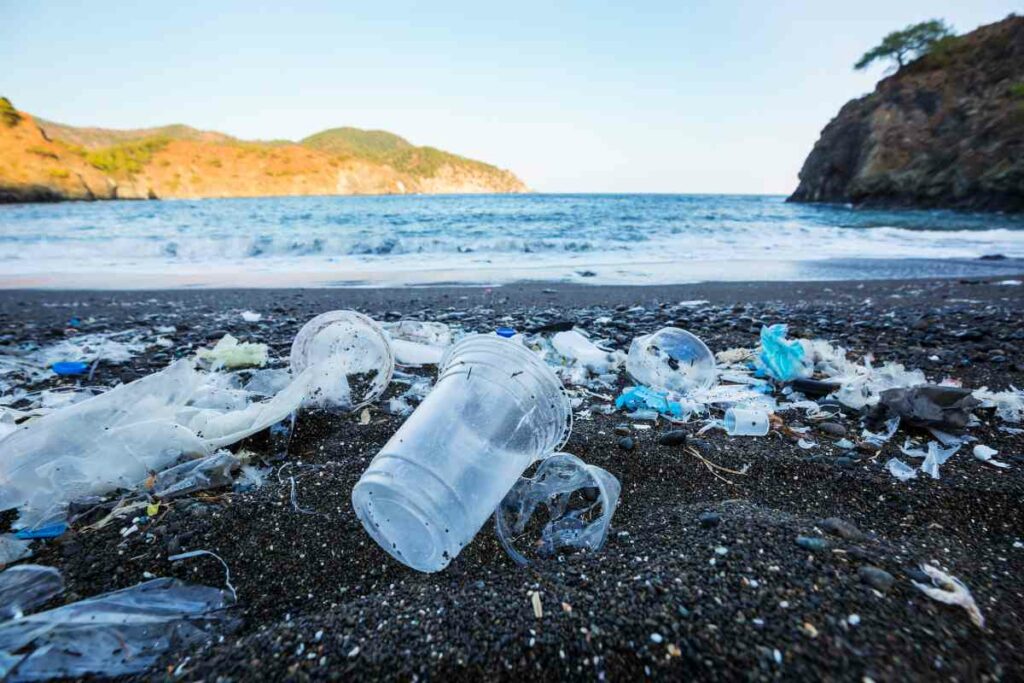
Beacon Database System
The US Environmental Protection Agency (EPA) maintains a national database called BEACON (Beach Advisory and Closing Online Notification), which collects and stores beach monitoring and notification data reported by states, territories, and tribes.
This platform allows users to access up-to-date information about water quality, beach closures, and advisories, enabling them to make informed decisions about beach activities.
Feedback and Contact
Questions and Feedback: The EPA encourages public users to provide feedback on the BEACON database and related services, as well as seeking answers to their queries.
To ask a question or provide feedback, individuals can visit the Beaches Contact Us page on the EPA website.
Report a Problem: In cases where people encounter issues related to water quality or other environmental concerns at a particular beach, they can report the problem directly to local authorities.
In addition, it’s helpful to reach out to the EPA through their “Contact Us” feature, as it enables the agency to monitor and address potential issues more effectively.
By facilitating clear and efficient communication channels, the EPA ensures that beach monitoring and regulation in the USA is transparent, responsive, and in the best interest of public health and the environment.
Regional and Coastal Beaches Information
In the United States, the monitoring and regulation of beaches, particularly coastal beaches and coastal recreation waters, are managed by a combination of federal and state entities.

The primary federal agency responsible for overseeing beach monitoring is the Environmental Protection Agency (EPA).
The EPA’s Beach Monitoring and Notification Program is a key component of their efforts to protect the public at the beach.
The program is supported by the BEACH Act, which authorizes the EPA to award grants to states, tribes, and territories for the development and implementation of their beach monitoring and notification programs.
Coastal recreation waters are defined by the BEACH Act as the Great Lakes and marine coastal waters (including coastal estuaries) designated for activities such as swimming, bathing, surfing, and similar water contact activities.
States, territories, and tribes use the funding provided by the EPA for various activities such as:
- Collecting water samples
- Analyzing water samples for harmful pathogens
- Tracking sources of pollution
- Notifying public health authorities in case of contamination
- Informing the public about beach closures or health advisories
The EPA also maintains a national database called BEACON (Beach Advisory and Closing Online Notification), which contains beach monitoring and notification data reported by states, territories, and tribes.
This centralized database helps provide easy access to information about particular U.S. beaches.
On a regional level, state-specific agencies, such as the Florida Department of Environmental Protection in Florida, are also involved in monitoring and regulating beaches.
These agencies work on protecting, restoring, and managing coastal systems within their respective states.
In summary, the monitoring and regulation of beaches in the USA are carried out through a collaborative effort between the EPA and state-specific agencies, ensuring the safety and health of the public when visiting coastal beaches and coastal recreation waters across the country.
Frequently Asked Questions
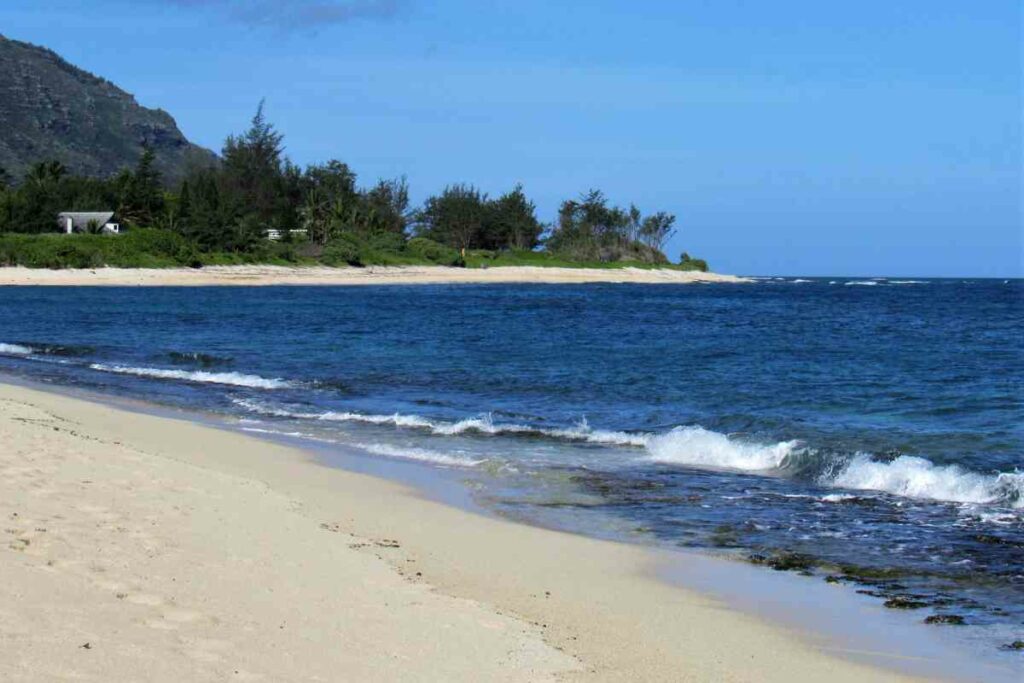
What government agency is responsible for regulating beach water quality?
The US Environmental Protection Agency (EPA) is the primary federal agency responsible for regulating beach water quality in the United States. They work with state, local, and tribal governments to ensure the safety and cleanliness of beaches and coastal waters.
What is the role of the EPA in beach monitoring?
The EPA plays an essential role in beach monitoring by providing funding and technical assistance to state and local governments. The agency supports activities such as collecting and analyzing water samples, notifying the public if water quality standards are exceeded, and maintaining state databases of beach water quality and advisory information.
What is the Beaches Environmental Assessment and Coastal Health Act?
The Beaches Environmental Assessment and Coastal Health (BEACH) Act is a federal law that requires the EPA to establish water quality standards for recreational beach waters and provide grants to state and local governments to improve beach monitoring and notification programs. The BEACH Act helps to protect public health and the environment by ensuring that water quality at US beaches meets established standards.
How does the Clean Water Act impact beach regulations?
The Clean Water Act establishes the basic structure for regulating discharges of pollutants into US waters and sets quality standards for surface waters, which includes beach waters. As part of this legislation, the EPA works with state and local governments to implement programs and regulations to reduce pollution and protect water quality at beaches.
What are the consequences for violating the Beach Act?
Violating the Beach Act can result in penalties such as fines and enforcement actions against the responsible parties. The EPA and state governments aim to ensure compliance with the Act and minimize pollution in beach waters by monitoring and taking necessary actions when water quality standards are not met.
How can individuals help improve beach and ocean health?
Individuals can contribute to the improvement of beach and ocean health by practicing responsible behavior, such as not littering, properly disposing of waste, participating in beach cleanups, and being mindful of the products they use that may pollute waters. By staying informed about local beach conditions and avoiding areas with water quality advisories, individuals can protect themselves and support efforts to maintain clean and healthy beach environments.
Final Thoughts
In conclusion, the EPA plays a crucial role in safeguarding the beaches and oceans in the United States, while also working in coordination with state and local monitoring agencies.
- Counting Down the Best Beaches in Ensenada
- Best Party Beaches in Florida – 13 Best Beach Destinations
- 6 Best Beaches In Kona for Swimming You Should Consider
- 4 Best Beaches In Holbox, Mexico (The Perfect Beach Getaway)
- 4 Best Beaches In Jalisco (Life’s Better at the Beach)
- The 5 Best Beaches In Rincon That Stole Our Hearts

